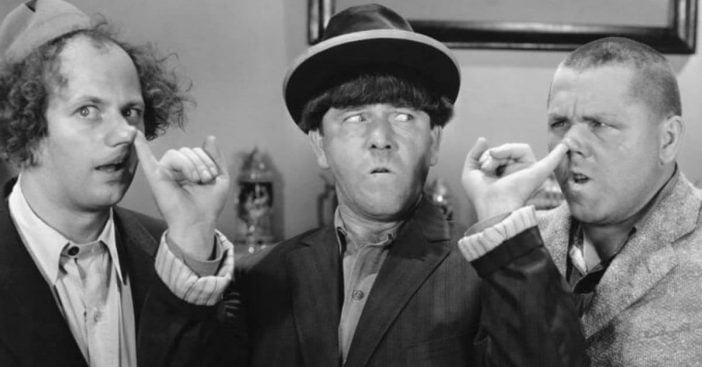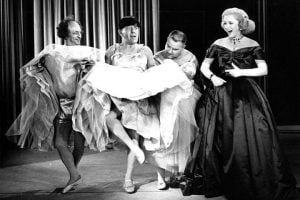
For a significant part of the twentieth century, America rolled with laughter thanks to The Three Stooges. This vaudeville comedy routine used all the tricks in the book – especially physical comedy. In fact, slapstick really earned a permanent place in comedy, in part, thanks to this iconic routine and trio. But, though we know the title The Three Stooges, the historic troupe was not always the same. Often, people look back and consistently remember Larry, Moe, and Curly as the stooges.
And this is understandable. While they reigned, each stooge brought something remarkable to the table. Larry and Moe became relatively permanent fixtures, so everyone quickly fell in love with their brands of comedy. And Curly, though not always a part of the team, offered very practiced, measured movements thanks to his unique upbringing. Here’s exactly how America fell in love with these three particular stooges.
The three stooges begin their journey

Though they always had a sort of vaudeville vibe to them, The Three Stooges as we know them didn’t start off like that immediately. The slapstick trio can trace back to the 1920s with the original title “Ted Healy and His Stooges.” Soon, the first Howard joined Ted Healy: Moe Howard. Months later, in 1922, his brother Shemp Howard joined as well. Six years later, Larry Fine contributed his particular talents to the group.
RELATED: 10 Facts About ‘The Three Stooges’ That Will Make You Want To Watch Them Again
This group presented a unique way of performing comedy, possible only thanks to the different skills each member brought to the table. Fine was a violinist-comedian, so his musical background helped reinforce the role of sound in playing out amusing skits. Healy too showed off a similar background, this time with singing. During various routines, he would attempt to sing, but his loud assistants/stooges interrupted songs and jokes alike. An irate Healy always met this behavior with verbal and physical retaliation.
Miraculously, Curly saved the day

Moe and Larry stuck with the group, but Shemp found Healy to be abrasive. He also took issue with Healy’s temper and drinking habits. With his departure, though, they needed a replacement to fill in the absence. Moe turned once again to family, this time suggesting his brother Jerry Howard. At first, Jerry wasn’t likely to join the routine. Reportedly, Healy was able to tell with just one look that Jerry wouldn’t inspire laughter by appearances alone.
Displaying a tendency for the outrageous that alone made him perfect for the role, Jerry allegedly shaved his head and tried again. That finally won Healy over. Some stories suggest the character name Curly came about because, after shaving everything but his mustache, Jerry’s statement of “Boy, do I look girly” sounded like “Boy, do I look curly.”
Larry, Moe, and Curly bring slapstick and class

It may seem easy enough to perform outrageous, sloppy maneuvers for comedy’s sake. But perfecting stunts takes a lot of control over the body. Also, the more outrageous, the better. That can require a performer to be very tenacious and strong. Fortunately, Curly actually brought that to the table with his massive amount of ballroom experience. Trivia points out that Curly actually trained at the Triangle Ballroom, located in Brooklyn.
It’s especially cruel, then, that such a talented man’s most iconic career got cut short because of a debilitating stroke. That whole third slot filled by Curly seemed to carry great weight to it, as Shemp returned to the group until his death in 1955. Curly’s stroke, though, brought attention to the conditions The Three Stooges faced; that slapstick actually took a toll on them. Curly suffered a head injury that required six stitches. That certainly raised eyebrows, especially after his stroke. Between stressful interpersonal tension and arduous physical demands, The Three Stooges, whether they be Larry, Moe, and Curly, or others, had to endure a lot to deliver the laughs.
